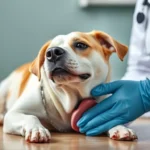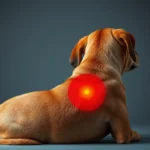
Introduction
Maintaining your dog’s health is a vital aspect of being a responsible pet owner. Just as humans require regular check-ups, a balanced diet, and good hygiene practices, dogs also need comprehensive care to live a long and happy life. Common health issues in dogs can range from skin conditions and allergies to dental problems and obesity.
One essential part of dog care is grooming, which plays a significant role in your dog’s overall health and well-being. This article aims to delve into the nuances of dog grooming and hygiene, with a particular focus on the question: can you use dry shampoo on dogs? Our target audience includes dog owners and caregivers who are seeking effective grooming solutions to maintain their furry friends’ health and happiness.
Understanding Dog Grooming
The Importance of Grooming
Regular grooming is not merely a cosmetic procedure; it has several health benefits. Grooming helps in:
- Reducing shedding: Regular brushing removes loose fur and minimizes the amount of hair that ends up on your furniture or clothes.
- Preventing matting: For long-haired breeds, grooming prevents tangles and mats that can lead to skin irritations.
- Promoting skin health: Grooming stimulates the skin and distributes natural oils, keeping the coat healthy and shiny.
- Identifying health issues: Regular grooming sessions allow you to check for lumps, bumps, or skin infections that might require veterinary attention.
Different Grooming Techniques
There are various techniques involved in dog grooming, including:
- Brushing: Regular brushing helps remove dirt and loose fur while preventing mats and tangles.
- Bathing: Bathing keeps your dog clean; however, it should not be too frequent, as over-bathing can strip natural oils from the skin.
- Nail trimming: Keeping nails trimmed is essential to prevent pain and mobility issues.
- Ear cleaning: Regularly checking and cleaning your dog’s ears can prevent infections.
Grooming Frequency by Breed
Dog grooming needs vary greatly depending on the breed. Here’s a brief overview:
- High-maintenance breeds: Breeds like the Maltese, Poodle, and Shih Tzu require frequent grooming—often every 4 to 6 weeks—to maintain their coat.
- Low-maintenance breeds: Breeds such as Beagles and Boxers have shorter coats that require less frequent grooming, usually every few months.
What is Dry Shampoo for Dogs?
Definition of Dry Shampoo
Dry shampoo is a waterless cleaning solution designed to absorb oils and dirt from your dog’s coat. Unlike traditional wet shampoos that require rinsing, dry shampoos are sprayed or sprinkled onto the fur and then brushed out. This makes it a convenient option for quick clean-ups between baths.
Types of Dog Dry Shampoos
There are two main types of dry shampoos for dogs:
- Commercially available options: These products come in various formulations and scents, designed specifically for canine use.
- Homemade dry shampoo recipes: Many dog owners opt for DIY solutions using safe ingredients like cornstarch, baking soda, and essential oils.
Ingredients to Look For
When choosing a dry shampoo for your dog, it’s essential to check the ingredient list. Look for:
- Safe and effective ingredients: Natural ingredients like oatmeal, aloe vera, and baking soda are often gentle and effective.
- Harmful ingredients to avoid: Steer clear of shampoos containing artificial fragrances, sulfates, or parabens, as these can irritate your dog’s skin.
Can You Use Dry Shampoo on Dogs?
Benefits of Using Dry Shampoo
So, can you use dry shampoo on dogs? Absolutely! Here are some benefits:
- Convenience for busy pet owners: Dry shampoo is quick and easy to use, making it ideal for pet owners with tight schedules.
- Waterless cleaning for dogs who dislike baths: If your dog is afraid of water, dry shampoo offers a stress-free alternative for keeping them clean.
- Quick freshening up between baths: Dry shampoo can help maintain your dog’s freshness between regular baths, especially for active dogs.
Considerations Before Use
Before applying dry shampoo, consider the following:
- Skin sensitivities and allergies: Always test a small area first to check for any adverse reactions.
- Appropriate dog sizes and breeds for dry shampoo use: While most dogs can benefit, some breeds with sensitive skin or certain health conditions may not be suitable candidates.
- When to avoid using dry shampoo: If your dog has skin conditions, open wounds, or severe matting, it’s best to consult a veterinarian before using dry shampoo.
How to Use Dry Shampoo on Dogs
Step-by-Step Guide
Using dry shampoo on your dog can be straightforward. Here’s a step-by-step guide:
- Preparing your dog for application: Ensure your dog is calm and comfortable. You might want to have treats handy.
- Application techniques: Shake the dry shampoo canister well, then apply it evenly to your dog’s coat from a distance of about 6-8 inches. Focus on areas prone to oiliness, such as the back and underarms.
- Amount to use based on dog size: Smaller dogs may require less product, while larger breeds may need a bit more. Start with a small amount and add more as needed.
Post-Application Care
After applying dry shampoo, brush your dog to distribute the product evenly. Keep an eye on your dog for any signs of irritation or discomfort, and discontinue use if necessary.
Frequency of Use
Dry shampoo should not replace regular baths. Recommended frequency for dry shampoo application is every few weeks, depending on your dog’s activity level and coat condition. If your dog starts to develop a noticeable odor or their coat looks dirty, it may be time for a full bath instead.
Alternatives to Dry Shampoo
Bathing Your Dog
While dry shampoo offers convenience, there are times when a traditional bath is necessary. Consider the following:
- When to opt for a traditional bath: If your dog is particularly dirty, has rolled in something unpleasant, or has a strong odor, a bath is the best option.
- Best practices for bathing dogs: Use lukewarm water and dog-safe shampoo, and ensure you rinse thoroughly to avoid any residue.
Wipes and Sprays
In addition to dry shampoo, there are other grooming products available:
- Overview of other grooming products: Grooming wipes and sprays can be used for a quick clean-up, especially in between baths.
- Pros and cons of alternatives: While wipes are convenient and easy to use, they may not be as effective for deep cleaning compared to a full bath or dry shampoo.
Professional Grooming Services
Sometimes, it’s best to leave grooming to the experts:
- When to consider professional help: If your dog has a complex grooming routine or requires specialized care, consider scheduling a visit to a professional groomer.
- Benefits of using groomers: Groomers can provide services like nail trimming, ear cleaning, and specialized cuts tailored to your dog’s breed.
Additional Dog Health Care Tips
Regular Vet Check-Ups
Routine health checks are essential to catch any potential issues early on:
- Importance of routine health checks: Regular veterinary visits can help detect underlying health problems before they become serious.
- Common health screenings and vaccinations: Keep your dog up to date on vaccines and screenings for common issues like heartworm and parasites.
Diet and Nutrition
A balanced diet plays a crucial role in your dog’s overall health:
- Impact of diet on overall health: Proper nutrition can influence everything from coat condition to energy levels.
- Recommended dog food types: Consult with your veterinarian to determine the best diet for your dog’s age, size, and activity level.
Exercise and Mental Stimulation
Physical and mental activity is vital for a happy dog:
- Importance of physical activity: Regular exercise helps maintain a healthy weight and reduces behavioral problems.
- Ideas for keeping dogs mentally stimulated: Engage your dog with puzzle toys, training sessions, and interactive games to keep their mind sharp.
Conclusion
In summary, maintaining your dog’s health involves a multifaceted approach that includes regular grooming, veterinary care, a balanced diet, and adequate exercise. Using dry shampoo can be a beneficial part of your grooming routine, offering convenience and a waterless cleaning option. However, it is crucial to consider your dog’s individual needs and consult with a veterinarian for personalized grooming and health care advice. By prioritizing grooming and overall health care, you can ensure that your furry friend lives a long, happy, and healthy life.









